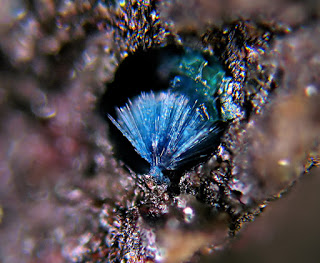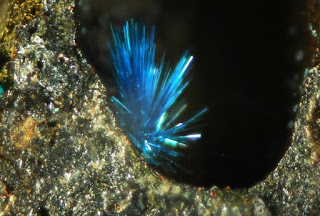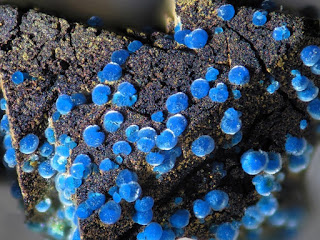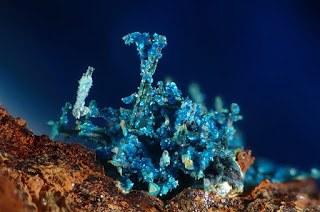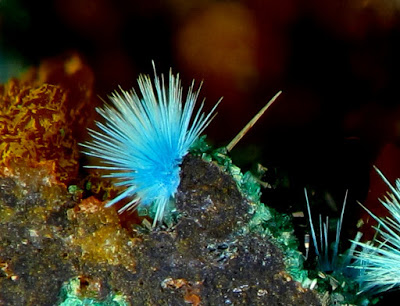
Chemical Formula: Cu19(SO4)(OH)32Cl4 · 3H2O
Name Origin: Named after the Scottish chemist, A. Conell (1794-1863).
Connellite is a rare mineral species, a hydrous copper chloro-sulfate, Cu19(OH)32(SO4)Cl4·3H2O, crystallizing in the hexagonal system. It occurs as tufts of very delicate acicular crystals of a fine blue color, and is associated with other copper minerals of secondary origin, such as cuprite and malachite. Its occurrence in Cornwall, England, was noted by Philip Rashleigh in 1802, and it was first examined chemically by Prof Arthur Connell FRSE in 1847, after whom it is named.
The type locality is Wheal Providence at Carbis Bay in Cornwall. Outside Cornwall it has been found in over 200 locations worldwide including Namaqualand in South Africa and at Bisbee, Arizona (USA).
Physical Properties of Connellite
Cleavage: None
Color: Blue green, Light blue.
Density: 3.4
Diaphaneity: Translucent
Fracture: Uneven – Flat surfaces (not cleavage) fractured in an uneven pattern.
Hardness: 3 – Calcite
Luminescence: Non-fluorescent.
Luster: Vitreous (Glassy)
Magnetism: Nonmagnetic
Streak: light blue green
Photos
